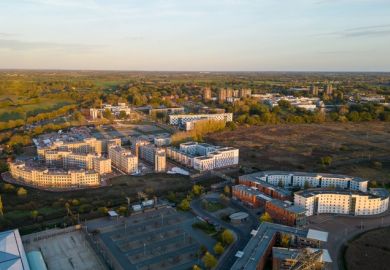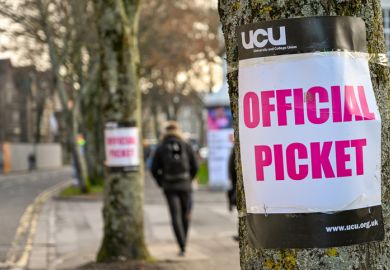A leading Australian university has flagged a major restructure and scores of job losses, saying “external headwinds” and federal government policy changes have left it more than A$200 million (£104 million) in the red.
The Australian National University (ANU) intends to cut 50 positions from its College of Health and Medicine, as part of a series of restructures aimed at saving money and boosting administrative efficiency.
In a document sent to staff and unions, the university said steadily increasing costs and stagnant earnings growth had produced more than A$400 million in cumulative operating deficits between 2020 and 2023. A projected 2024 deficit of A$60 million had blown out to over A$200 million.
Proposed international enrolment caps next year and tighter government control of domestic admissions threatened to make a bad situation worse, and a “financial plan” to achieve an operating surplus by 2026 had proven unviable. “Without structural intervention, the university will not be financially sustainable,” the document says.
It outlines plans to cut A$150 million a year in non-salary spending and a further A$100 million on salaries. So far, the only announced job losses are 12 academic positions and 38 professional posts from the disestablished health college, whose academic and research centres will be moved to other colleges.
Three other colleges will be renamed, with several schools and centres shifted between them.
Lachlan Clohesy, Australian Capital Territory secretary of the National Tertiary Education Union (NTEU), said he expected more announcements about job cuts “in the near future”.
Dr Clohesy said other recent changes, including hikes in parking fees and the closure of ageing childcare centres on the campus, had fuelled a “perception of arbitrary decision-making” at ANU. “These pronouncements from the chancelry tower with little to no consultation…have a huge effect on people’s lives.”
But he said ANU’s financial situation had “not been helped” by the uncertainty around international student caps. “We repeat our call for the education minister, Jason Clare, to implement a transition plan to make up funding shortfalls due to federal government policy changes.”
An ANU spokeswoman said “there will be further changes required in 2025 as we work towards a sustainable position, and we will be transparent about these with our community”.
The university has allocated two weeks for consultation on the proposed structural changes and job cuts, with an implementation plan to be published a fortnight later and the changes to commence in January.
NTEU branch president Millan Pintos-Lopez said the proposal was a “kick in the guts” for staff and “completely inconsistent” with recent developments that suggested an ongoing future for the health college.
In July 2023, ANU announced that it had bought a A$17 million block of land to build a “world-leading national health precinct”. Last month it announced a review of culture in the college, to be led by former Victorian police commissioner Christine Nixon.
“We’re concerned for the people whose roles have been identified as surplus and will work with our members to try to save jobs,” Mr Pintos-Lopez said.
ANU said its expenses had increased 10 per cent between 2021 and 2023, while revenue had risen just 3 per cent.
It said the college’s disestablishment would produce administrative and service efficiencies and “greater long-term financial sustainability”, while allowing for co-location of “infrastructure-intensive” research.
Register to continue
Why register?
- Registration is free and only takes a moment
- Once registered, you can read 3 articles a month
- Sign up for our newsletter
Subscribe
Or subscribe for unlimited access to:
- Unlimited access to news, views, insights & reviews
- Digital editions
- Digital access to THE’s university and college rankings analysis
Already registered or a current subscriber?










